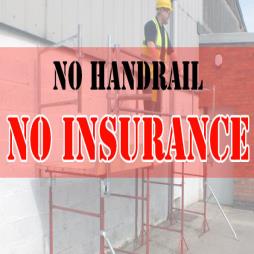Managing a Successful Job Site: 5 Tips to be a Better Project Manager
06-05-2015
With the property market booming again, the construction industry has seen a strong resurgence. Investors are flocking to buy up and build property that has been ignored for years — with money loaned at the lowest interest rates in recent history. As a result, the average construction process has condensed timeframes but maintains the highest level of quality.
Regardless of the pressure associated with these fast turnaround times, an effective project manager can ensure success by following some key tips. Here are five things every project manager (PM) should know and live by:
Understand your scope of work.
It goes without saying that, as a PM, you should know the ins and outs of a project long before stepping onto a job site. It’s crucial to have a complete understanding of what your scope of work is for any given project, so you can effectively direct your efforts toward achieving it.
Without a doubt, one of the biggest signs of an inexperienced PM is completing work that did not fall within their scope. Always carefully review what information you have and what your scope of work is. Then, take time to question and clarify your client’s expectations.
Know how much is enough information.
Because of the emphasis on fast turnaround times for quality projects, it’s uncommon to have the luxury of starting work with a set of 100% designated construction drawings. Often, you’ll have an 80% set or, at best, a 100% design set.
It’s important to be able to break free of the stereotypical building mold and adapt to the schedule of receiving information and delivering a project. It’s completely possible to begin framing out a project before all mechanical work is completed. On the flip side, it’s important to understand that sprinkler work can’t begin without completed mechanical drawings unless you want costly revisits to shop drawings. Understand what you can and can’t do and act accordingly — your client will appreciate it.
Effectively communicate with clients and engineers.
Regardless of being in complete control of the workflow on a jobsite, it’s crucial to understand that a PM exists as a channel for the client and their engineers. It’s impossible to complete a job without an open stream of communication with both of these crucial parties.
Many times, engineering drawings will not be clear. As a result, it’s important to be able to readily contact an engineer and clarify issues that have a significant impact on project schedule. Similarly, having a close relationship with a client is crucial in order to answer the inevitable design and aesthetic questions that will arise as a project approaches completion.
Effectively communicate with subcontractors.
Once you have a clear understanding of your job, it’s crucial to be able to effectively convey this information to subcontractors. The entire success of your job will be based upon your ability to both manage a schedule and direct subcontractors toward completing their work.
Often, the best way to communicate with subcontractors is to show them exactly what’s expected of them. Rather than relying on their understanding when they arrive on site, take the time to print out scaled drawings, explain your expectations, and communicate any concerns you have about their scope. This conversation will offer valuable insight into your subcontractor’s preparation and give you a sense of how attentive you’ll need to be as they work.
You should also offer subcontractors the assurance of an open line of communication. A PM needs to be readily available throughout the entire length of a project. Assuring this to a subcontractor also offers the benefit of setting up the precedent that you can contact them at any given moment throughout a project to discuss concerns and issues.
Practice job site safety.
As cliché as it may seem, safety is one of the most important factors on the job site. In order to have an efficient job site, you need to ensure you have subcontractors that adhere to safety guidelines. A project’s timeline and delivery will inevitably be put at risk if a safety inspector deems your jobsite unsafe or a serious accident occurs.
Being a PM that respects safety guidelines will show a client that you care about how your project is completed, as much as when it is completed. Adhering to safety guidelines will also foster respect among your subcontractors. Subcontractors that believe a PM cares about their wellbeing will always do their best to be efficient on-site.
This means you need to have control barriers or fencing to keep the job site off limits to those who shouldn’t be there. You’ll also want to make sure construction workers are using the safest equipment to complete their tasks.
Following these five simple rules will help you become a more efficient project manager. Above all else, remember that being a smart PM is about building and maintaining relationships with both clients and subcontractors. As long as you have their best interests in mind, they will maintain the same for you.Visit the Heaton Products Ltd website for more information on Managing a Successful Job Site: 5 Tips to be a Better Project Manager






